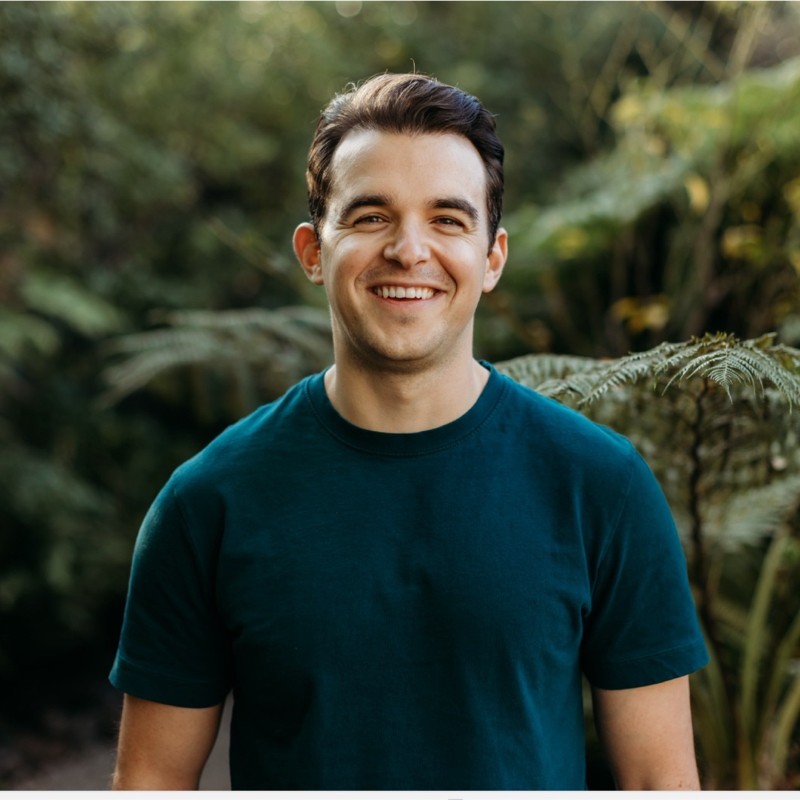This article is part of our Uncovering the Partnerships Career Path spotlight series. Each week, a different professional joins us to share their take on the partnerships career path, responsibilities at each stage, best practices for advancing professionally, and more. Learn more in the intro article.
This week, Henry Prevette, the Director of Channel Partnerships at Impact, joins us to discuss how he ended up in partnerships from finance, his role at Impact, advice for others in partnerships, and more.
Thanks to Allbound for sponsoring this quarter’s spotlight series!
Allbound is a SaaS Partner Relationship Management (PRM) platform that gives its customers visibility into predictable channel revenue, indirect and direct pipeline, and insight into partner engagement and adoption. With Allbound, you have the ability to monitor, understand, and track partner behavior so you can measure, iterate, and improve.
Henry’s Path to Partnerships
Like most partnership professionals, Henry shared he didn’t set out to end up in the role. His background is in finance, and through a series of different events, a colleague asked him to join the Agency Team at Impact. This worked out well since Impact processes millions in payments to publishers all over the world. Henry was tasked with partnering with a large global bank that would help Impact build the capabilities to process billions of dollars in payments in dozens of currencies.

During that time, Henry had to coordinate with the product team, map back to the bank’s capabilities, and was also involved in the commercial agreement. That was his first “adventure” into partnerships, which he shared he didn’t realize was a partnership at the time.
Within a few months of formally transitioning to the agency team at Impact, the colleague that brought him on left and Henry was the only agency person remaining, which led to Henry taking over partnership management activities. Now, Henry oversees work for the whole tech ecosystem while still helping with agencies and overseeing the referral program. Today, Impact has thirteen people in North America focused on partnerships, with plans to double by the end of the year.
The Value of Product Experience in Partnerships
Impact’s partnership group has teams that focus on new partner acquisition and teams that focus on growth of established partnerships. “For a number of years, we only had enough resources to be reactive to agencies that wanted to work with Impact. All of our resources were focused on growing existing partners vs proactively going out and finding new ones.”
Henry’s responsibilities for acquisition cover three key channels: agency partners, tech ecosystem partners, and key integrations. He also supports the referral program and prospecting strategy with publishers and consultants.
Out of all of this, Henry shared that collaboration with Product teams has always been critical to his role. “It plays the biggest role when I’m engaging a technology partner. Some of the relationships I built with our Product team are still key relationships seven years later, and I’m able to use those learning in developing the ecosystem today.”
“Having been an individual contributor for so many years, I kind of got that first-hand experience understanding the inner workings of a partnership and what makes them successful. If I had inherited this from a direct-sales background, I’m not sure I would have been knowledgeable enough. You have to learn by doing before you can teach other people how to do it.”
Making an Impact at Impact
At Impact, partnership teams’ success is measured by an overall goal of revenue. Henry explained Impact’s KPIs for partnerships, “We have a quarterly goal: newly acquired business through our three channels. It’s a team goal; across all the different ecosystems, we have an overarching objective. That’s the primary guide. When we’re weighing new initiatives that we want to do, we need to weigh it against if it drives new business or growth.”
For Henry, it’s not just about making money. “Personally, for me, there are always other KPIs. I want to have a team that sticks around, likes coming to work, and is productive. If we’re not hitting the goals, either they aren’t the right goals, or they don’t have clear direction and leadership. I want to provide that leadership to the team.”
Building a Strong Partnerships Team

Henry has been growing his team at Impact recently. He discussed how the qualities he looks for differ across roles. “When I’m hiring a Channel Partner Associate, I’m looking for a hunter, someone with a BDR background who’s comfortable with cold calling and can have a meeting quota. Typically, these individuals have a sales background.”
“For a Tech Partnerships Manager role, I would look at if they have a track record of knowing how to coordinate cross-departmentally. Do they have prior experience measuring things outside of bookings, like customer experience or the number of customers integrated? Since this is more of a process-oriented strategic role, I’m looking for less of a hunter mentality.”
“For the other Channel Partner Manager roles with agencies, I look for someone more business development-minded. Since this is acquisition-focused, the role needs to be proactive, where you’re actively looking to do more together.”
Outside of hard skills and past job experiences, soft skills are essential too. “Culture fit is also a big one. Candidates need to meet the role requirements, but they also need to be someone people enjoy working with. I try to have different members of the team involved in the hiring process so we can get a sense of if other people like this person — that’s important for us to have that family-feel we have with our team.”
Valuable Partnerships Resources
Henry discussed a few different resources that have been beneficial in progressing his partnerships career. “Crossbeam‘s content has been awesome. I’ve used their surveys and data several times to get a raise or promotion. I also used it very heavily when building our tech ecosystem. I also use Impact’s own content for developing our strategy around ‘content partners’ and other affiliate-like partnerships we develop for Impact”
Industry groups have also been valuable for Henry. “I’ve been members of both CSA and Partnership Leaders for a while. I’ve participated in roundtable discussions, done a ton of networking. The most valuable lessons I’ve learned have been through Partnership Leaders where I could talk to a colleague to understand how they would approach partnerships.”
Fundamentals for a Successful Future in Partnerships
When asked about advice for other partnerships professionals, Henry had a few key insights to share. “Learning to prioritize is so important. It’s different when the company is small. I was in the first 40 people. Now we’re almost 700 people. The difference between when you’re in partnerships at a headcount of 40 compared to when the company is over the $100MM ARR benchmark is significant. You go from taking any opportunity you can get to protecting yourself and your team from companies coming to you and wasting time. I have some team members who have asked about time management in their one-on-ones. They’ll share that they feel like they’re behind or missing certain things. My response is that perfection is in prioritization. The goal is not to clear your inbox every day — you can’t tick off every box. The goal is to prioritize as best as you can.”
Next, Henry highlighted the value of leveraging your peers. “All the time, I will reach out to people who have more experience than myself. The industry lacks the buttoned-up education material of what we do. But, we have a culture of people who want to help each other and people who are really smart. Leveraging that knowledge base, talking to other people that have been there is key. Don’t reinvent the wheel.”
Finally, Henry shared that you have to hire good people! “You gotta hire people who have more potential than yourself if you want to have a solid team that hits their goals. You don’t want people who need their hands held. You want people who want your job.”
Henry’s Next Horizon
While he may not have expected to land in partnerships, Henry isn’t leaving the industry any time soon. “The next step in my career would be to be a VP of Partnerships. I love partnerships and have every intention of staying in that function. Where I am in my career, I get to touch a lot of different business models. I want to maintain that. I think the next stage would be a VP role in a SaaS company.”
How will he get there? “I think I have a lot to learn still on certain channel strategies. I want to develop an SI strategy. I think I need to go to the next level of enterprise SaaS where that’s a key type of channel. I also want to see the tech ecosystem take off and be successful.”
Level-up Your Career with Partnership Leaders
We’ll be taking a deep dive into the careers of more partnerships professionals over the next few weeks. Download the Partnerships Career Progression Playbook to get insights from professionals like Henry on advancing a partnerships career.
Join The 1850+ Leaders Transforming Partnerships
As a member of Partnership Leaders you will:
- Build and learn with the top partner people at the best companies around the world.
- Increase your impact and accelerate your career with proven resources, tools, and best practices.
- Grow a network of peers, partners, and advisors with common objectives.
